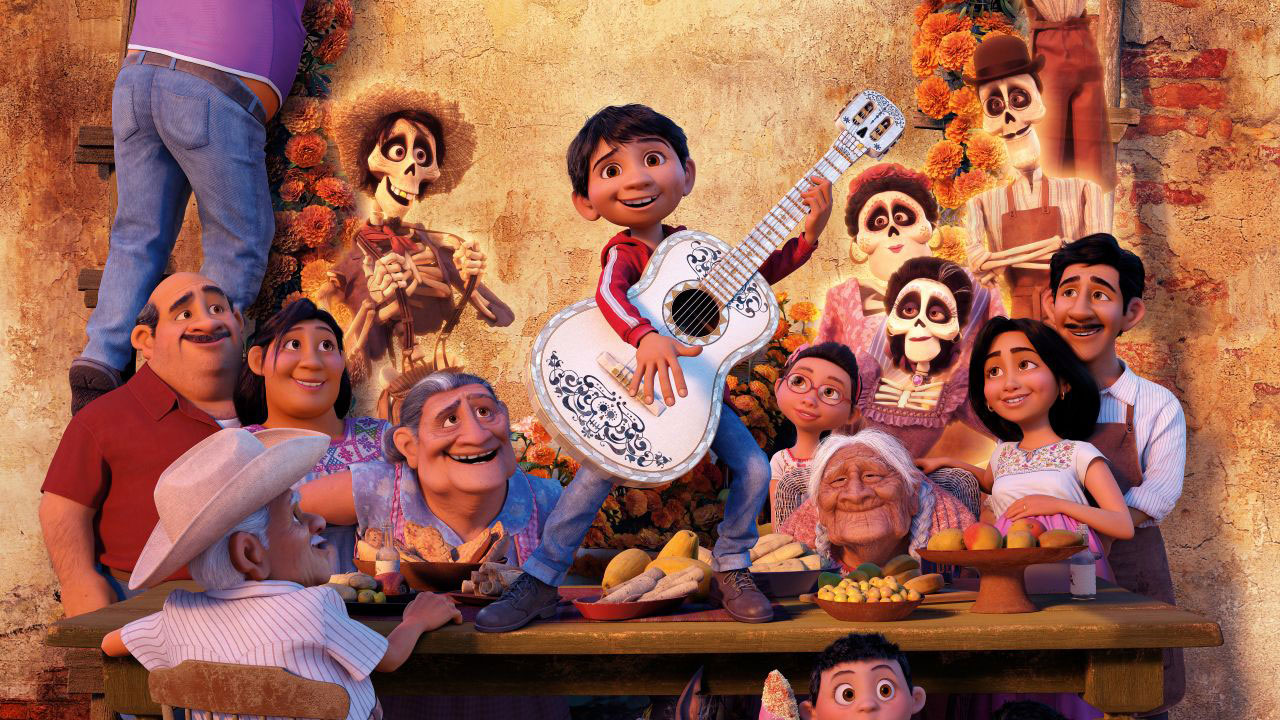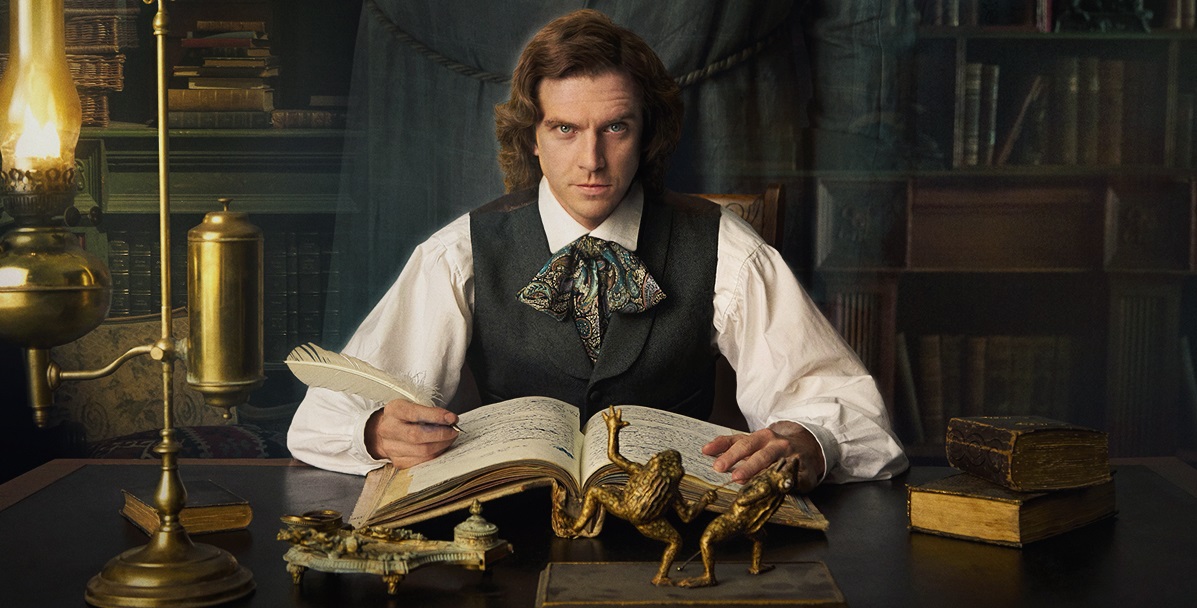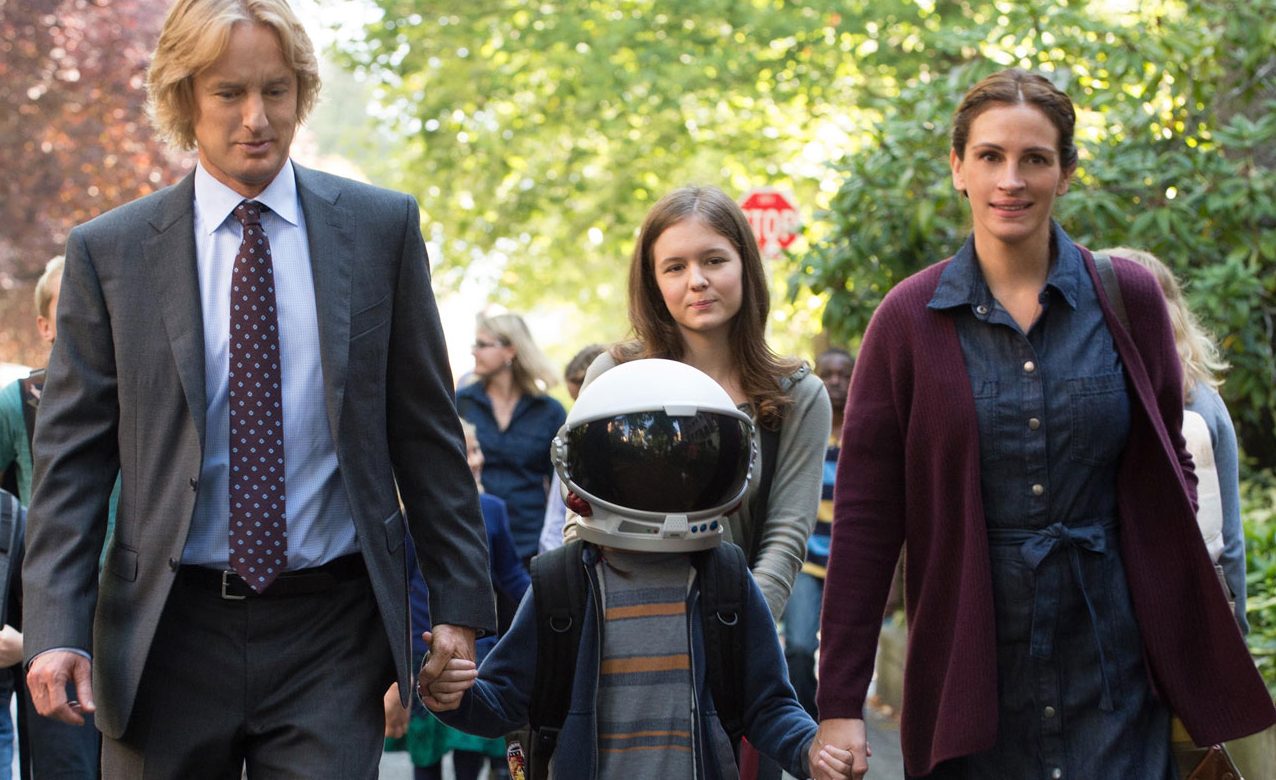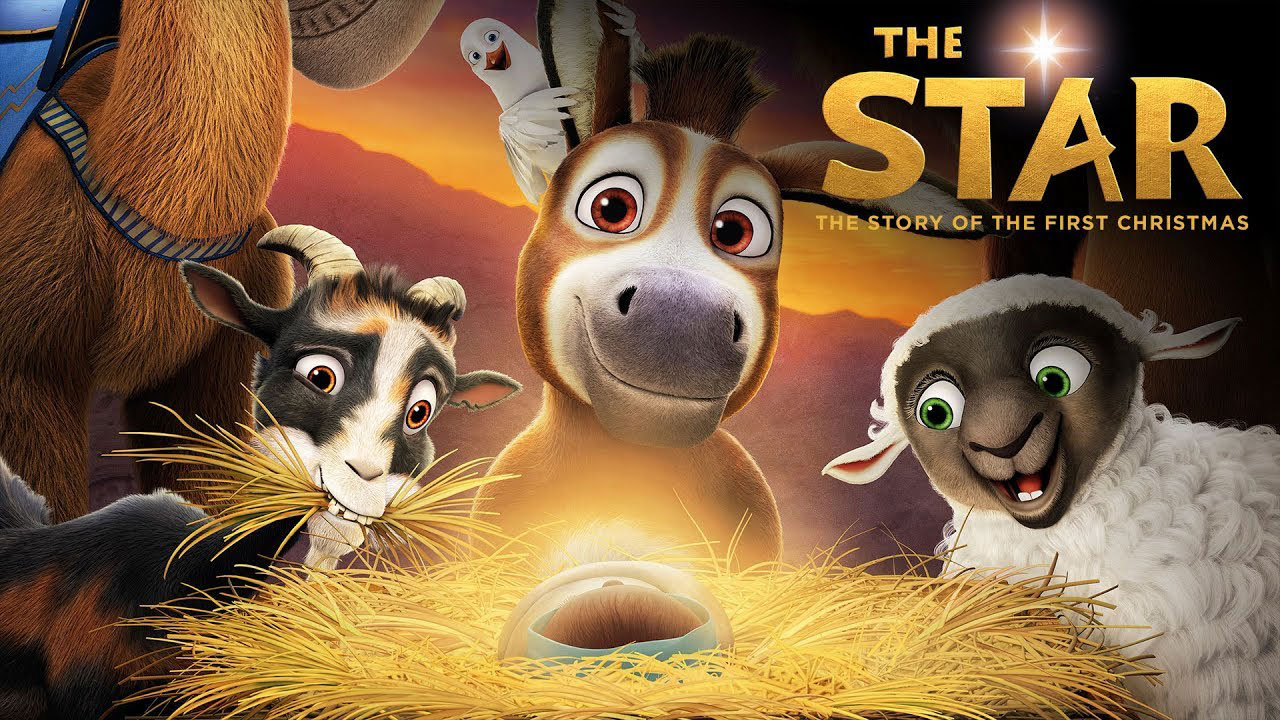
by Michael Foust | Dec 1, 2017
Children will want to see “Justice League” even if it isn’t getting high marks from critics. So, is it OK for kids?
Superman is dead, and the world is mourning – desperately looking for heroes.
Batman, of course, is still fighting crime, but even he can’t stop the imminent threat to Earth: an invasion from a monstrous creature known as Steppenwolf and his army of scary-looking Parademons.
Never fear, though: Our caped crusader has a plan.
“I’m putting together a team of people with special abilities,” he says.
That team will include Wonder Woman but also a motley group of other superheroes: Aquaman, Cyborg and Flash. Together, they will repel Steppenwolf and save humanity from yet another deadly threat. They will be unstoppable … right?
The much-anticipated Justice League (PG-13) is now in theaters, giving us DC Comics’ answer to Marvel’s Avengers series. It stars Ben Affleck as Batman, Gal Gadot as Wonder Woman, Ezra Miller as Flash, Jason Momoa as Aquaman and Ray Fisher as Cyborg.
I’m a big fan of superhero films. DC’s Man of Steel was solid, and its Wonder Woman was even better. But Justice League doesn’t belong in the same universe with those films. The plot is confusing – believe me, it’s far more complicated than I made it seem – and its characters not as likeable as the ones in the Avengers series (minus Wonder Woman – but only because she’s a carryover from a stand-alone film). Many of its funny moments fall flat, too.
Warning: spoilers!
Violence/Disturbing
Moderate/excessive. Most of the violence is bloodless, but there’s still a lot of it. The film opens with a villain shooting at Batman. They then get into a fight. Later, we see villains shoot machine guns. The evil Steppenwolf is a large demonic-looking creature with horns, and his Parademons (they have wings) are even more frightening-looking. We see bad guys hold several people (including children) hostage. The good guys and the bad guys punch one another throughout the film. The film concludes with a massive battle scene.
Sexuality/Sensuality/Nudity
Minimal. Wonder Woman’s costume is quite skimpy, and the camera ogles her figure more than was the case in the stand-alone Wonder Woman film. A male and female character share a kiss in a field. Aquaman is shirtless throughout the film. Batman/Bruce Wayne tells Alfred of Wonder Woman: “I’m only interested in her skill set.” Alfred replies: “I’m sure you are.”
Coarse Language
Moderate. I counted 10 words: h-ll (3), s–t (2), a–(2), misuse of “Jesus” (2), SOB (1). (If you’re curious, Batman is the one who abuses Jesus’ name twice.) We also hear a partially bleeped F-word.
Other Positive Elements
Our heroes put their lives and safety on the line throughout the movie. Wonder Woman even blocks multiples rounds of machine-gun fire to protect a group of hostages. Later, a father and a son who had an estranged relationship reconcile.
Other Negative Elements
Batman and Wonderful Woman drink liquor and make a toast. Aquaman drinks alcohol straight out of the bottle before diving back into the sea.
Life Lessons
We see examples of self-sacrifice (Wonder Woman, Batman, and the others), forgiveness (two main characters late in the film) and reconciliation (a father and son)
Worldview
Justice League gives us a mixture of superheroes. Cyborg and Flash were regular folks who were changed by a strange event. Batman is a rich man with cool tools. Aquaman’s origins are unclear. And Wonder Woman comes from the universe of Greek gods and goddesses.
But whatever the background, it’s worth considering: Why are we moviegoers so attracted to superhero films? Sure, we enjoy the entertainment value, but I think it goes much deeper. Here’s what I think: We have a natural attraction to things that are otherworldly and even miraculous. We want to believe that a being from outside our world can come and rescue us – and hand out justice, too. We want a being to come save the world.
Of course, that can be accomplished only by Christ. And nearly all superhero narratives – whether intended or unintended – point to Him.
Partners
For children, Dave & Buster’s is the most well-known partner.
Family-Friendly?
Justice League – like most superhero movies – includes tons of violence. For that reason alone, I can’t consider it family-friendly for young children. But for discerning teens, it’s likely family-friendly.
What I Liked
The music. The relationship between the father (who is in jail) and the son (who becomes Flash).
What I Didn’t Like
The plot. A successful superhero film doesn’t get bogged down in the minutia – the comic book nerd talk — of the superhero universe. Unfortunately, Justice League fails to keep it simple. Instead of good vs. evil, we’re left trying to piece together the meaning of three “Mother Boxes” that form a key part of the plot. A mid-movie voiceover from Wonder Woman, explaining the boxes, can’t even save it.
Thumbs Up … Or Down?
Sadly, thumbs down.
Discussion Questions
- Why is our society so attracted to superhero films?
- Which superhero is your favorite? Why?
- Do you agree with Wonder Woman’s movie-ending monologue about light and dark?
- Do you think Batman was humbler in this movie than previous films? Why or why not?
Entertainment rating: 2.5 out of 5 stars. Family-friendly rating: 3 out of 5 stars.
Justice League is rated PG-13 for sequences of sci-fi violence and action.

by Michael Foust | Nov 24, 2017
Coco has multiple worldview problems – especially when viewed through a Christian lens. Like 2016’s Moana, it shows the main character disobeying authority. Like Moana, it presents children talking to deceased relatives. And like Moana, it promotes a practice that is clearly prohibited in Scripture.
Miguel is a gifted and energetic boy with big dreams of becoming a famous singer just like his idol, the late Ernesto de la Cruz.
Miguel’s family, though, doesn’t share his passion for music. In fact, they hate it. That’s because Miguel’s great-great grandfather – also a singer – traded his family for his musical career, and they haven’t seen him since. All forms of music are now banned in the home.
That’s too bad, because Miguel has a knack for playing the guitar – a talent he discovered while sneaking away from home. In fact, he shows so much promise that some townsmen are encouraging him to enter the upcoming talent show.
What will he do? Finally, he decides: He will run away and take part in the show.
“I don’t want to be in this family!” he tells everyone.
There’s just one problem with his plan: He doesn’t own a guitar. So, Miguel breaks into the town’s own “Ernesto de la Cruz memorial” and steals the memorial’s guitar – a deed he rationalizes as OK because he and the famous singer apparently are related.
Oh yeah – all of this is taking place on the night of Día de los Muertos (“Day of the Dead”), a Mexican holiday in which families build small-but-elaborate shrines to deceased ancestors so as to commune with and remember their relatives.
When Miguel strums his stolen guitar, magic happens. He is transported into the Land of the Dead, a beautiful megacity full of walking-and-talking skeletons (who wear clothes). He even meets some of his relatives! Perhaps if Miguel can find Ernesto de la Cruz himself, the famous singer-relative will bless Miguel’s musical career.
The Disney/Pixar movie Coco (PG) opens in the U.S. this weekend, one month after it debuted in Mexico and became the highest-grossing film ever in that nation. It stars Anthony Gonzalez as Miguel, Gael García Bernalas as his skeleton friend Hector, and Benjamin Bratt (Despicable Me 2) as de la Cruz.
Coco comes from the same studio (Pixar) that gave us such family-friendly flicks as the Cars and Toys Story series, Finding Nemo and Finding Dory. But Coco is no innocent children’s movie – especially when viewed through a Christian lens. Like 2016’s Moana, it shows the main character disobeying authority. Like Moana, it presents children talking to deceased relatives. And like Moana, it promotes a practice that is clearly prohibited in Scripture (see Worldview, below).
Let’s examine the details …
Warning: spoilers!
Violence/Disturbing
Moderate. In a Looney Tunes-like scene, a singer is killed when a giant bell falls on him. Coco contains no fighting, but it has plenty of disturbing elements that could trouble small children. Characters’ arms, legs and heads frequently fall off, and they simply pick them up and put them back on. It’s quite common in the Land of the Dead to pass around one’s own head. (Such as for selfie pictures – of course!) Dragon-like spirit creatures inhabit the Land of the Dead. We learn of a murder plot in the real world.
Sexuality/Sensuality/Nudity
Minimal. We see a female skeleton, without clothes, posing for a painting. (Miguel covers his eyes as if he’s embarrassed.)
Coarse Language
None. I heard one instance of “jerks.”
Other Positive Elements
Despite their musical quirk, Miguel and his large family are tight. They love one another. They take care of one another. (Everyone makes shoes.) They just disagree about music.
We learn that a singer chose his family over his career. (“Nothing is more important than family,” we hear.)
Other Negative Elements
See Worldview, below.
Life Lessons
When a choice must be made between family and a career, what should you do? Too many people in our culture get that one wrong, but Coco delivers a rather satisfying answer.
Worldview
Give Pixar credit: The film’s presentation of the Day of the Dead is factual. In Miguel’s home, photos of deceased relatives fill the altar. We see trinkets of the deceased’s favorite things. The living even set out samples of their deceased relatives’ favorite foods. Finally, flower petals are scattered between the grave and the home, allowing the spirits to find their way.
It’s the “one night of the year our ancestors come visit us,” says one of Miguel’s family members.
According to Coco, the goal is to keep alive the memory of the deceased so that their spirit will remain alive. If the deceased are forgotten in the real world, then their spirit enters “final death.” – and they disappear from the Land of the Dead. Where do they then go? According to the movie, “no one knows.”
The problem: Every bit of this is unbiblical. When we die, we face judgment (Heb. 9:27) and are either with God or separated from God – forever. There is a heaven and hell, but there certainly is no Land of the Dead. Jesus even says that the deceased cannot cross back over to the real world – and the living also cannot go back and forth (Luke 16:19-31).
Scripture even commands us not to commune with the dead (Deuteronomy 18:10-12, Isaiah 8:19).
Finally, let’s examine our natural desire to study and remember our past: our great-grandparents, our grandparents and parents, our aunts and uncles. By itself, there is nothing wrong with that. It’s even a good thing. Remember: Family is one of God’s great gifts. Without family, we wouldn’t exist! When we are sharing stories of deceased loved ones, we are honoring God by not forgetting His many blessings. In a sense, their story is our story, too. But God already has told us: Don’t try and communicate with them. And worship Him alone.
Sponsors
For children, Subway is the most well-known partner.
Family-Friendly?
When I’m ready to teach my children about the Day of the Dead – that is, when they’re older – perhaps I’ll pull out Coco. But I’m not comfortable doing that when they’re five. For discerning teens, Coco is family-friendly. But for young children? No. It’s far more problematic than Moana.
Thumbs Down?
Visually, Coco is a beautiful movie – the colors, the beauty of the Mexican culture, the loving bond seen within Miguel’s family. But it includes a worldview I cannot endorse for Christian families with young children. Thumbs down.
Entertainment rating: 3 out of 5 stars. Family-friendly rating: 2 out of 5 stars.

by Michael Foust | Nov 21, 2017
The Man Who Invented Christmas tells the incredible and inspiring story behind the origins of one of Charles Dickens’ most popular books, “A Christmas Carol.”
Charles Dickens is having writer’s block – and he’s short on money, too.
The year is 1843, and the man who wrote “The Adventures of Oliver Twist” and “The Life and Adventures of Nicholas Nickleby” is struggling to come up with another hit. His newest books are getting bad reviews. His publisher even is threatening to cut him off.
“I’ve run out of ideas,” he tells a good friend.
It’s no small problem. An author without ideas is an author without a paycheck. And with several mouths to feed and another baby on the way, Dickens is feeling the pressure.
But then he gets inspired from a series of real-life events. He sees a rich man disparage a beggar. He hears about a poor man tossed into debtor’s prison. Perhaps his next novel could spotlight a cold-hearted miser who despises not only poor people, but Christmas, too. Dickens will call the character … “Scrooge”!
The Man Who Invented Christmas (PG) opens this week, telling the incredible story behind the origins of one of Dickens’ most popular books, “A Christmas Carol.” It stars Dan Stevens (Downton Abbey) as Dickens and Christopher Plummer (Up, The Sound of Music) as Ebenezer Scrooge.
The film gets its curious title from the impact of “A Christmas Carol” on our modern-day celebration of the holiday. The book popularized the phrase “Merry Christmas,” sparked a rise in generosity, and helped revive Christmas as an important date on the calendar. Until then, it often passed with little fanfare. (And, for the record, Jesus – not Dickens – invented Christmas.)
The Man Who Invented Christmas is an entertaining and inspiring tale of an author who simply wanted to promote charitable giving and who wanted to – in his words – deliver a “hammer blow” to selfishness. It’s also an instant Christmas classic.
Let’s examine the details.
Warning: minor spoilers!
Violence/Disturbing
Moderate. We see flashbacks of Dickens as a boy, when he and another boy got into a fight. We also see Dickens take a swing at an imagined ghost. For young children, the most disturbing element involves the images of the various ghosts in the story, including the Ghost of Christmas Future. Children who are troubled by the black-and-white film or by Dickens’ book should skip this one.
Sexuality/Sensuality/Nudity
None.
Coarse Language
Minimal. One instance of “a–.” Several uses of the British word “bloody.”
Other Positive Elements
Dickens has a heart for the poor. When given a chance to send a man to debtor’s prison, he refuses. His goal is to see society’s wealthy assist the poor.
He also wants his story to end with hope – that is, with Scrooge repenting. (See Worldview, below.)
Other Negative Elements
Dickens believes his father squandered his life. The two men have a bad relationship. Dickens even tells his father, “Go away … I am sick of the sight of you.” But by the film’s end, the two men reconcile.
We also see Dickens and a friend get drunk.
Life Lessons
The Man Who Invented Christmas includes lessons on generosity (Dickens, Scrooge), the danger of riches (Scrooge), redemption (Scrooge, Dickens’ father) and family (Dickens and his father).
Worldview
“People don’t change,” an imagined Scrooge tells Dickens.
Dickens, though, refuses to believe it. He wants his novel to tell the story of a miser who – yes – wasted his life, but who also sees his errors. He wants the miser to repent.
The Bible is full of warnings about the dangers of riches, but it’s also full of stories of redemption. Roughly half the New Testament was written by a man who once hated and murdered Christians!
The Man Who Invented Christmas is not a faith-based story in the strict sense. But it is filled with biblical principles that are worthy of discussion on the ride home.
What I Liked
The screenplay. It’s not easy making a movie about a man writing a book. Think about it: How do you depict his mental struggles on the big screen? The filmmakers accomplished this by showing Dickens literally talking to Scrooge. Scrooge sort of “helps” Dickens write the book, but Dickens often pushes back against the miser’s self-centered beliefs.
What I Didn’t Like
The title.
Family-Friendly?
Young children who are sensitive to the disturbing elements of “A Christmas Carol” shouldn’t see this one. But for most parents and children, it would be considered family-friendly.
Thumbs Up … Or Down?
Thumbs up.
Rated PG for thematic elements and some mild language.
Entertainment rating: 4 out of 5 stars. Family-friendly rating: 4 out of 5 stars.

by Michael Foust | Nov 17, 2017
“Wonder” is an emotion-laden comedy-drama that is, well, wonderful. You feel for Auggie, you laugh with Auggie, and by the end, you’re cheering him on.
Auggie is a smart and funny young boy who knows he isn’t – in his words – “ordinary.” He sounds different. He looks different. And when other kids see him on the playground, they run.
Born with major facial deformities, he has undergone 27 surgeries to improve his vision, hearing and breathing, but even those operations haven’t made him look normal. So he wears an astronaut’s helmet.
He’s also been homeschooled, which means he hasn’t faced the bullying and name-calling that could ensue.
But now that Auggie is old enough to enter middle school, his parents believe it’s time to integrate him into a more public setting – that is, a mainstream school.
Will other children accept him? Can he make friends?
It’s all part of the heart-warming film Wonder (PG), which opens this weekend and is based on the popular children’s novel of the same name by R.J. Palacio. It stars Jacob Tremblay as Auggie; Owen Wilson as his father; Julia Roberts as his mom; and Izabela Vidovic as his teenage sister, Via.
Wonder is an emotion-laden comedy-drama that is, well, wonderful. You feel for Auggie, you laugh with Auggie, and by the end, you’re cheering him on. It’s the box-office tonic our divided society needs to watch. I cried … and cried. It’s also one of the best films of 2017.
Let’s examine the details.
Warning: minor spoilers!
Violence/Disturbing
Minimal. We see two middle school students fight in the hallway. Later, we see a group of boys fighting another groups of boys in the woods (in self-defense).
Sexuality/Sensuality/Nudity
Minimal. Two high school students share a kiss, twice (We also see them hug and hold hands). We also see a mom and dad kiss.
Coarse Language
Minimal. I counted four coarse words: OMG (3), misuse of “God” (1), misuse of “Jesus” (1). We also hear “fart” (1), “suck (1)” and “butt” (2).
Other Positive Elements
Although some of the kids are slow to accept Auggie, by the film’s end they are good friends with him. Auggie’s sister, too, shows unconditional love for Auggie, even though she has largely been ignored.
The movie’s anti-bullying message is front and center. The principal tells one set of problematic parents: Auggie can’t change the way he looks but “maybe we can change the way we see.”
Wonder is a pro-life film, even if it doesn’t deal with the subject of abortion. That’s because it showcases the value and worth of a little boy who would have been cast aside in many cultures.
Other Negative Elements
Auggie’s mom, excited about their family’s progress, jokes with her husband: “Let’s get drunk.”
Life Lessons
Wonder is filled with positive lessons. The film gives us lessons on self-sacrifice (the mom had put her career on hold to take care of Auggie), bullying (see above), befriending those who look different and standing up for what is right.
Worldview
Several months ago, I was sitting in a restaurant when my 9-year-old son saw a disabled woman at a restaurant and asked: “What’s wrong with her, Dad?” It was a teachable moment, and I made four points: 1) that’s the way she was made, 2) she is valuable to God, 3) she is just like us, and, 4) God expects us to stand up for her. Those are the same points I’d make to my son if he asked, “What’s wrong with Auggie?” Auggie was made in the image of God (Gen. 1:26) and is valuable to Him. God expects us to stand up for him – and He will judge those who mistreat the afflicted (Amos 2:6-7; Isa. 35:3-4).
What I Liked
The screenplay – it tells the story from the perspective of different people in Auggie’s life – and the humor. The film also does a great job showing Auggie as a normal kid. He loves sports. He enjoys light saber battles. He simply looks different. And that’s no big deal.
What I Didn’t Like
The fighting. Sure, it can be rationalized by labeling it as self-defense and standing up for the oppressed. But I fear children will watch the film and walk away believing violence is the only option.
Family-Friendly?
Overall, Wonder is mostly family-friendly. I’d likely take my 9-year-old son to watch it. But my 5-year-old twins? I’m not sure. Different parents will reach different conclusions about young ones viewing it.
Thumbs Up … Or Down?
Thumbs up.
Entertainment rating: 4.5 out of 5 stars. Family-friendly rating: 4 out of 5 stars.
Wonder is rated PG for thematic elements including bullying, and some mild language.

by Michael Foust | Nov 16, 2017
“The Star,” which tells the Nativity Story through the eyes of animals who follow Mary and Joseph, is one of the best animated films of the year.
Bo is a first-century donkey full of spunk and energy – and he’s determined not to live his entire life inside a Nazareth grain mill.
“We were meant for something greater than this,” he says.
But … for what?
Perhaps that bright star in the sky – a star he gazes at each night – is a sign. Perhaps it’s even a sign for him!
Finally, Bo gets a big break. His barn mate helps him break out, with the owner in tow. And a chase through the streets of Nazareth ensues, until Bo loses his owner and winds up in the backyard of a young couple named Mary and Joseph. Maybe Bo really was meant for something great!
It’s all part of The Star (PG), an animated film that opens this weekend and tells the nativity story through the eyes of animals who follow Mary and Joseph and witness the birth of Christ. It stars Steven Yeun as Bo, Keegan-Michael Key as Dave the dove, Aidy Bryant as Ruth the sheep, Gina Rodriguez as Mary and Zachary Levi as Joseph. Tyler Perry (Cyrus the camel), Oprah Winfrey (Deborah the camel), Patricia Heaton (Edith the camel) and Kelly Clarkson (Leah the horse) also have roles.
It is being released by the same company – AFFIRM Films – that released War Room and Courageous.
I’ll be honest: I didn’t like the trailers for The Star. But I really enjoyed the film. It’s one of the best animated films of the year – funny, entertaining and inspiring – and also faithful to Scripture (even if it does “fill in the blanks” with scenes not in the Bible). My movie-crazy children (ages 9 and 5) loved it.
The film follows Mary and Joseph and the animals as they try and make their way from Nazareth to Bethlehem. But Herod, wanting Jesus killed, sends out one of his henchman – a large dude carrying a spiked ball-and-chain flail – to find and harm the young couple (That character, of course, is not in Scripture).
Warning: minor spoilers!
Violence/Disturbing
Minimal. Herod’s henchman nearly catches Mary and Joseph a couple of times, but is always stopped by the animals, who are played as heroes. At one point he also grabs a person by the neck (It’s played for laughs).
Sexuality/Sensuality/Nudity
None.
Coarse Language
None. We hear the word “poop” (in reference to something the dove does), the phrase “well-placed No. 2” (again, by the dove) and “butt” (referencing Bo).
Other Positive Elements
Mary and Joseph’s steadfast trust in God plays a prominent role.
“Just because God has a plan doesn’t mean it’s going to be easy,” Mary says.
A couple of mean animals repent.
Other Negative Elements
None.
Life Lessons
We see lessons on grace (when good animals save the mean animals from dying), God’s providential care of Jesus (when Bo and his friends stop the henchman) and trust in God (by Mary and Joseph). There’s also a scene of repentance.
What I Liked
The humor. It’s not easy to make me chuckle during a film, but I (and my children) laughed a lot. The movie also has one or two Pentatonix Christmas songs. It’s hard to beat that.
Obviously, I liked the movie’s message, too.
“People are going to remember this night,” one of the camels says following Christ’s birth. “What happened here around this manger will be celebrated for thousands of years. Families will come together and exchange presents and sing carols – and all to remember the grace of this moment that we are witnessing right now.”
What I Didn’t Like
The jokes continued until the credits rolled. It wasn’t irreverent, but the ending would have been more powerful if the manger scene was joke-free. Additionally, The Star – like nearly every modern-day depiction of the nativity – gets the timing of the wise men’s arrival wrong (They weren’t there the night of Jesus’ birth).
Thumbs Up … Or Down?
This one’s easy: thumbs up.
Family-Friendly?
The Star is one of the most family-friendly movies I’ve seen, with only a minor caution for sensitive children. Otherwise, it’s appropriate for all ages.
Entertainment rating: 4 out of 5 stars. Family-friendly rating: 4.5 out of 5 stars.
The Star is rated PG for some thematic elements.




